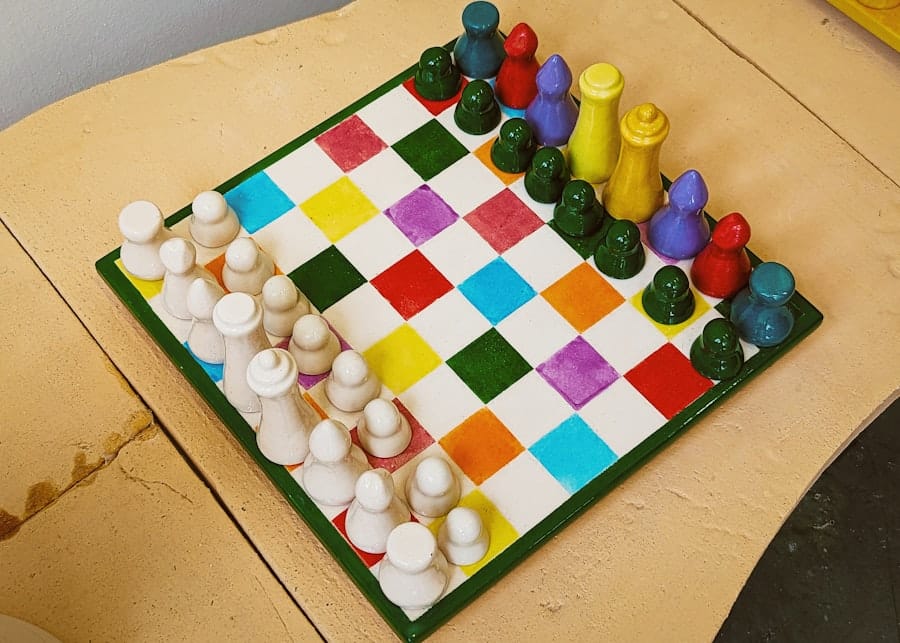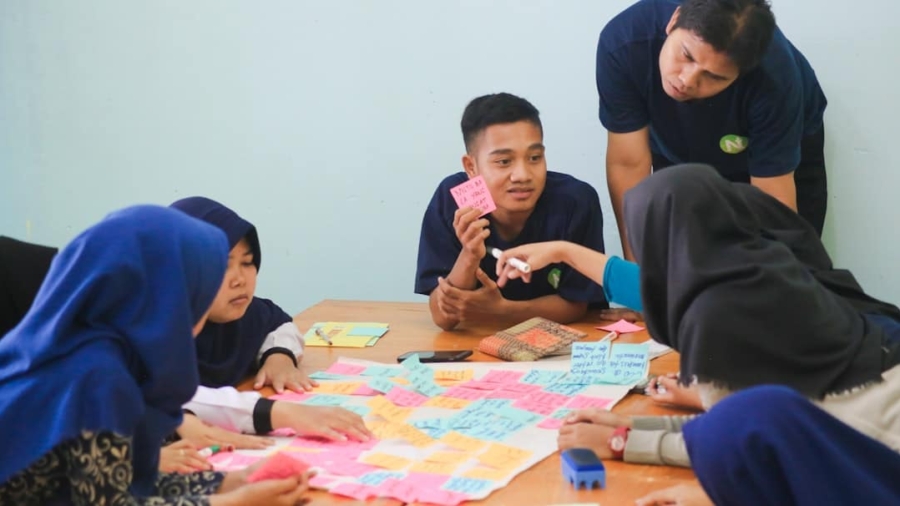In recent years, the educational landscape has witnessed a significant transformation with the advent of gamified learning platforms. These platforms integrate game design elements into educational contexts, creating an engaging and interactive environment for learners. The rise of technology, particularly mobile devices and the internet, has facilitated this shift, allowing educators to harness the motivational power of games to enhance learning experiences.
Companies like Kahoot!, Classcraft, and Duolingo have emerged as frontrunners in this domain, offering tools that not only make learning enjoyable but also effective. The proliferation of gamified learning platforms can be attributed to several factors. First, the increasing familiarity of students with gaming culture has made it easier for them to engage with educational content presented in a game-like format.
Research indicates that students are more likely to participate actively when they perceive learning as a game rather than a chore.
As educators seek innovative ways to capture the attention of digital natives, gamification has become a compelling solution that aligns with contemporary learning preferences.
Key Takeaways
- Gamified learning platforms are on the rise, offering interactive and engaging experiences for students.
- Gamification has a positive impact on student motivation, making learning more enjoyable and rewarding.
- Gamified platforms play a crucial role in personalized learning, catering to individual student needs and preferences.
- Gamification contributes to improved student retention by creating a more immersive and memorable learning experience.
- Gamified platforms promote collaborative learning, encouraging teamwork and communication among students.
The Impact of Gamification on Student Motivation
Immediate Feedback and Sense of Accomplishment
By incorporating elements such as points, badges, and leaderboards, gamified platforms create a sense of accomplishment that traditional educational methods often lack. For instance, when students earn points for completing assignments or participating in discussions, they experience immediate feedback that reinforces their efforts.
Intrinsic Motivation and Autonomy
Moreover, gamification taps into intrinsic motivation by fostering a sense of autonomy and competence among learners. When students are given choices in their learning paths or allowed to set personal goals within a gamified framework, they feel more invested in their education.
Deeper Engagement and Resilience
This autonomy encourages them to take ownership of their learning journey, leading to deeper engagement with the material. Studies have shown that students who engage with gamified content are more likely to persist through challenges and demonstrate resilience in the face of difficulties, ultimately enhancing their overall educational experience.
The Role of Gamified Platforms in Personalized Learning

Personalized learning is an educational approach that tailors instruction to meet the individual needs, skills, and interests of each student. Gamified platforms play a crucial role in facilitating this personalized approach by providing adaptive learning experiences that respond to the unique pace and preferences of learners. For example, platforms like DreamBox Learning and IXL use algorithms to assess student performance in real-time, adjusting the difficulty level of tasks based on their progress.
This adaptability ensures that students are neither bored with material that is too easy nor overwhelmed by content that is too challenging. Additionally, gamified platforms often allow students to choose their learning paths based on their interests and strengths. This choice empowers learners to engage with content that resonates with them personally, making the educational experience more relevant and meaningful.
By integrating elements such as quests or missions that align with curriculum goals, educators can create a dynamic learning environment where students feel motivated to explore topics at their own pace. This personalized approach not only enhances student engagement but also fosters a deeper understanding of the material as learners connect it to their own experiences and aspirations.
Gamification and its Effect on Student Retention
Student retention is a critical concern for educators and institutions alike, as high dropout rates can undermine the effectiveness of educational programs. Gamification has emerged as a powerful tool for improving retention rates by creating an engaging and supportive learning environment. When students are actively involved in their learning through gamified experiences, they are less likely to disengage or drop out.
The interactive nature of these platforms encourages continuous participation and fosters a sense of community among learners. One notable example is the use of gamified elements in online courses, where students often face challenges related to isolation and lack of motivation. Platforms like Coursera and edX have incorporated gamification strategies such as progress tracking and peer interaction features to keep learners engaged throughout their courses.
By providing opportunities for social interaction and competition, these platforms help students feel connected to their peers and invested in their learning journey. As a result, students are more likely to complete courses and achieve their educational goals.
The Use of Gamified Platforms in Promoting Collaborative Learning
Collaboration is an essential component of effective learning, as it allows students to share ideas, solve problems collectively, and develop critical social skills. Gamified platforms have proven to be instrumental in promoting collaborative learning experiences by incorporating features that encourage teamwork and communication among students. For instance, platforms like Classcraft enable students to work together in teams to complete quests or challenges, fostering a sense of camaraderie and shared purpose.
These collaborative elements not only enhance social interaction but also promote deeper learning through peer-to-peer engagement. When students collaborate on tasks within a gamified framework, they are more likely to discuss concepts, share diverse perspectives, and learn from one another’s strengths. This collaborative approach aligns with constructivist theories of learning, which emphasize the importance of social interaction in knowledge construction.
As students navigate challenges together, they develop essential skills such as negotiation, conflict resolution, and empathy—skills that are invaluable both in academic settings and beyond.
Gamification and its Influence on Student Performance

The influence of gamification on student performance is a topic of considerable interest among educators and researchers alike. Numerous studies have demonstrated that gamified learning environments can lead to improved academic outcomes across various subjects and age groups. For example, research conducted by the University of Colorado found that students who engaged with gamified math programs outperformed their peers in traditional settings by significant margins.
This improvement can be attributed to the increased motivation and engagement fostered by gamification. Furthermore, gamification encourages mastery-based learning, where students progress through levels or challenges at their own pace. This approach allows learners to focus on understanding concepts thoroughly before moving on to more complex material.
As they achieve mastery in specific areas, they gain confidence in their abilities, which can further enhance their performance across subjects. The combination of immediate feedback, goal-setting opportunities, and adaptive challenges creates an environment where students are empowered to take risks and strive for excellence.
The Future of Gamified Learning Platforms in Education
As technology continues to evolve, the future of gamified learning platforms appears promising. Innovations such as virtual reality (VR) and augmented reality (AR) are poised to revolutionize the way gamification is implemented in educational contexts. These technologies can create immersive learning experiences that transport students into virtual worlds where they can explore complex concepts in engaging ways.
For instance, VR simulations can allow students to conduct virtual science experiments or explore historical events firsthand, making learning more interactive and memorable. Moreover, advancements in artificial intelligence (AI) are likely to enhance the personalization capabilities of gamified platforms even further. AI-driven analytics can provide educators with insights into student performance patterns, enabling them to tailor instruction more effectively.
As these technologies become more accessible and integrated into educational systems, gamified learning platforms will continue to evolve, offering increasingly sophisticated tools for enhancing student engagement and achievement.
Best Practices for Implementing Gamified Platforms in the Classroom
Implementing gamified platforms effectively requires careful planning and consideration of best practices to maximize their impact on student learning. One key practice is aligning gamification elements with specific learning objectives. Educators should ensure that game mechanics such as points, badges, or levels directly support the curriculum goals rather than serving as mere distractions.
This alignment helps maintain focus on educational outcomes while leveraging the motivational aspects of gamification. Another important practice is fostering a growth mindset among students by emphasizing effort over innate ability. Educators can encourage this mindset by celebrating progress and achievements within the gamified framework while providing constructive feedback on areas for improvement.
Additionally, incorporating opportunities for reflection allows students to assess their own learning journeys and set personal goals within the gamified environment. Finally, it is essential for educators to create an inclusive atmosphere where all students feel valued and supported in their learning experiences. This can be achieved by offering diverse challenges that cater to different skill levels and interests while promoting collaboration among peers.
By implementing these best practices thoughtfully, educators can harness the full potential of gamified platforms to create engaging and effective learning environments that inspire students to thrive academically and personally.
Gamified platforms have been proven to increase student engagement in various educational settings. In fact, a recent article on the ultimate collection of 2023’s best Notion templates for students highlights how technology can be leveraged to enhance learning experiences. By incorporating gamification elements into their study routines, students can stay motivated and focused on their academic goals. Additionally, utilizing the right tools, such as the best laptop for copywriters or the best antivirus software in 2023, can further support students in their educational journey.
FAQs
What are gamified platforms?
Gamified platforms are educational tools that incorporate game elements, such as points, badges, leaderboards, and challenges, into the learning experience to increase student engagement and motivation.
How do gamified platforms increase student engagement?
Gamified platforms increase student engagement by making learning more interactive and enjoyable. By incorporating game elements, students are motivated to participate, compete, and achieve goals, leading to increased interest and involvement in the learning process.
What are some examples of gamified platforms?
Some examples of gamified platforms include Kahoot, Classcraft, and Duolingo. These platforms use game elements to enhance the learning experience and increase student engagement.
What are the benefits of using gamified platforms in education?
Using gamified platforms in education can lead to increased student motivation, improved learning outcomes, and a more interactive and enjoyable learning experience. It can also help students develop skills such as problem-solving, critical thinking, and collaboration.
Are gamified platforms suitable for all subjects and grade levels?
Gamified platforms can be adapted for various subjects and grade levels, making them suitable for a wide range of educational settings. Whether it’s math, language arts, science, or social studies, gamified platforms can be customized to meet the specific needs of different subjects and grade levels.

